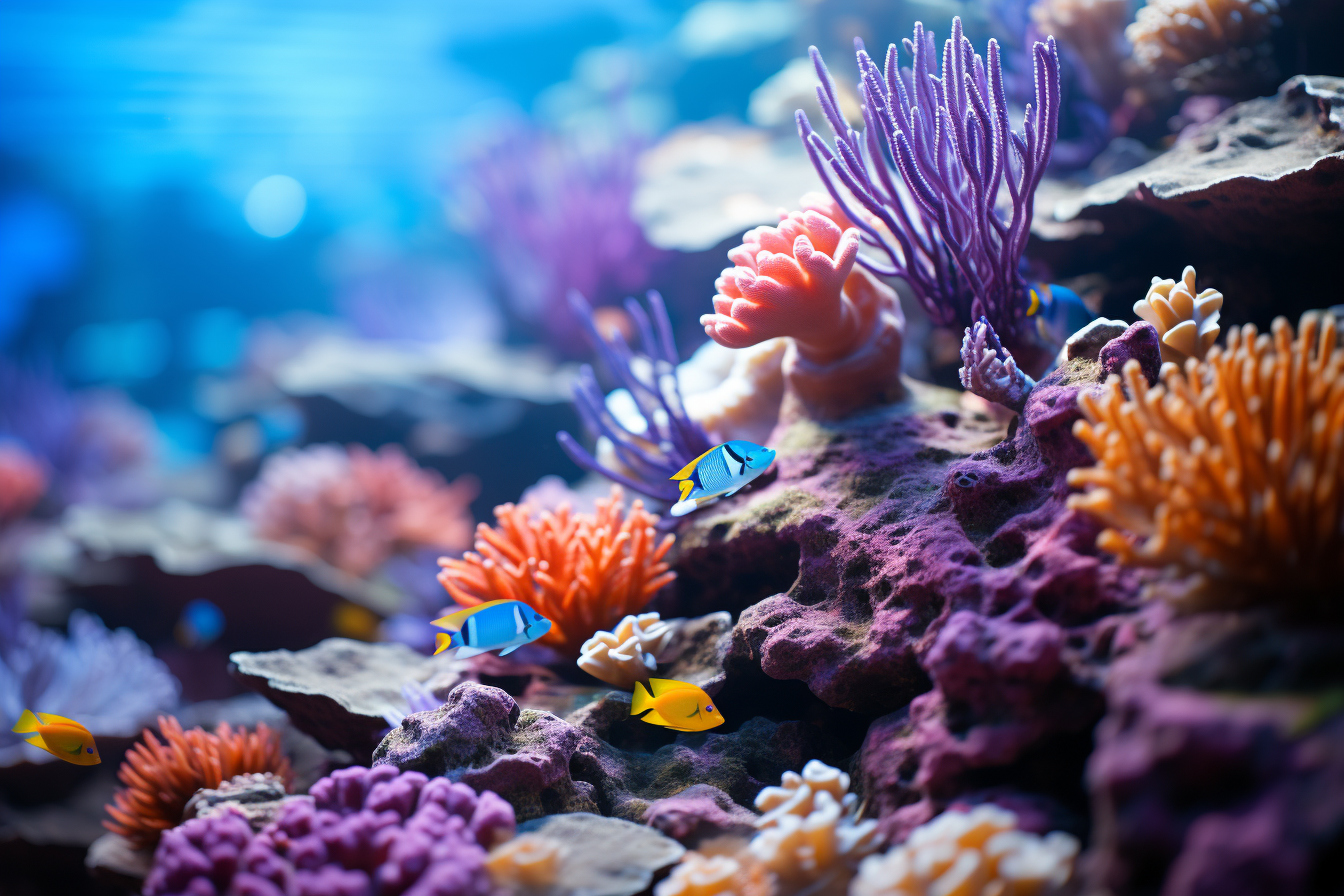Corals, these fascinating marine creatures, are often recognized for their beauty and their role in preserving marine ecosystems. However, a little-known aspect of these organisms is their contribution to the manufacture of ancient medicinal remedies. By diving into the depths of the oceans, we discover a natural treasure whose therapeutic virtues are still underestimated.
Corals, the true pharmacy of the sea
Corals are true jewels of nature, endowed with incredible diversity. Scientists estimate that there are more than 800 species of coral in oceans around the world. Each species has its own healing properties and has been used by different civilizations throughout history.

An ancestral remedy for multiple ailments
Corals have been used for thousands of years in traditional remedies of various cultures. For example, in Chinese medicine, red coral is commonly used to treat circulatory problems, such as varicose veins and high blood pressure. The ancient Egyptians also used coral powders in their preparations to treat digestive problems and skin infections.
Healing with marine minerals
The chemical composition of corals makes them a mine of minerals essential for our health. They are rich in calcium, magnesium, zinc and many other trace elements. These minerals are absorbed by the body when used in medicinal remedies, thereby strengthening our immune system and improving our overall health.
Coral, an ally against inflammation and pain
In addition to their mineral wealth, corals also have anti-inflammatory properties. The active compounds present in these marine organisms are able to reduce inflammation and relieve joint and muscle pain. This property makes them valuable allies in the treatment of inflammatory diseases such as arthritis and fibromyalgia.
Preservation of coral ecosystems
While corals can be used for their medicinal benefits, it is important to emphasize the importance of protecting these marine ecosystems. Coral reefs are not only habitats for many marine species, but they also play a crucial role in regulating climate and protecting coastlines from erosion. It is therefore essential to promote sustainable fishing and fight against destructive practices that threaten these precious ecosystems.
Corals and modern biotechnologies
When we broach the subject of corals and their therapeutic virtues, we tend to think of ancestral remedies and traditional methods of treatment. However, with the evolution of biotechnology and marine science, there is immense scope for exploration that leads to new discoveries.
Advances in technology have allowed researchers to analyze corals at a molecular level. Thus, new active compounds, previously unknown, have been identified. These compounds, often unique to specific coral species, have the potential to treat complex diseases that remain unsolved with current drugs.
For example, studies have shown that certain corals have molecules that can inhibit the growth of cancer cells. These discoveries could eventually lead to the development of new anti-cancer treatments, thereby revolutionizing the therapeutic approach to this devastating disease.
At the same time, nanotechnology, which concerns the manipulation of materials at the atomic or molecular scale, offers fascinating possibilities in combination with the properties of corals. Imagine nano-devices capable of delivering coral compounds directly to diseased cells, maximizing their effectiveness while minimizing side effects.
However, the exploitation of these marine treasures for biotechnology should not be rash. It is essential to put strict regulations in place to ensure that coral research is sustainable and does not lead to overexploitation. Thus, efforts to preserve these natural wonders must go hand in hand with scientific advances.
The integration of corals in cosmetology
In addition to their medicinal properties, corals have also entered the world of beauty and cosmetology. Their richness in minerals and active compounds makes them valuable ingredients for skin and hair care. Cosmetic companies, always looking for natural and effective ingredients, are increasingly turning to the treasures that the oceans have to offer.
Coral extracts, in particular, are now incorporated into many skin care products. They are known for their ability to deeply hydrate the skin, fight the signs of aging and improve skin elasticity. These compounds, rich in antioxidants, help fight free radicals, responsible for premature aging of the skin.
Additionally, the anti-inflammatory properties of corals can help soothe irritated skin and reduce redness. For people suffering from skin conditions such as eczema or psoriasis, coral products can offer natural and effective relief.
Beyond skin care, corals also find their place in the hair industry. The minerals found in corals nourish the scalp and strengthen the hair fiber, leading to stronger, shinier hair.
Coral regeneration and future prospects
By looking at the importance of corals, both medicinally and cosmetically, a crucial question arises: how to guarantee their sustainability in the face of current environmental challenges? Corals, despite their apparent robustness, are fragile organisms and sensitive to changes in their environment. Global warming, marine pollution and unsustainable fishing practices have already caused irreversible damage to many coral reefs.
However, efforts are underway to help regenerate these valuable ecosystems. Many organizations and researchers are dedicated to growing corals in the laboratory, hoping to reintroduce them to their natural habitat. These “cultured” corals are adapted to withstand warmer, more acidic conditions, preparing them for an uncertain future.
Technological innovations, such as underwater drones, are also being used to monitor the condition of coral reefs and to quickly detect areas in distress. These tools allow rapid intervention to prevent further degradation.
The future of corals will largely depend on the synergy between scientific research, technological innovation and global awareness. As we discover more and more of the hidden treasures they hold, it is our responsibility to ensure that these precious ecosystems are preserved for future generations.
Interactions between corals and marine fauna
When we talk about corals, we often talk about their role in the marine ecosystem, their medicinal importance or their intrinsic beauty. However, a less discussed but equally fascinating aspect is the interaction between corals and marine fauna. This symbiosis is both a delicate dance and an essential relationship for the survival of many organisms.
Clownfish: a love affair with anemones
We all know the iconic image of the clownfish nestled in the tentacles of an anemone. Although anemones are not corals, this symbiotic relationship perfectly illustrates the interaction between marine fauna and cnidarians, the group to which corals belong. The anemone’s venomous tentacles protect the clownfish from predators, while the fish brings food to and cleans its host.
Cleaner wrasses: the dentists of the reefs
Cleaner wrasses play a vital role in maintaining the coral ecosystem. These small fish feed on parasites found on the skin of other fish. In exchange for this meal, the larger fish allow the wrasses to clean them, creating a mutually beneficial relationship.
Corals and shrimps: protective cohabitation
Some species of shrimp, like pistol shrimp, make their home in corals. These shrimps dig small caves in the corals where they live safely. In exchange for this shelter, they defend the corals against possible predators and pests.
The importance of these interactions
These symbiotic relationships show how interconnected the coral ecosystem is. Disruption of one element can cause a cascade of effects across the entire system. For example, if a species of fish disappeared, this could disrupt the nutritional balance of corals and have repercussions on other species.













